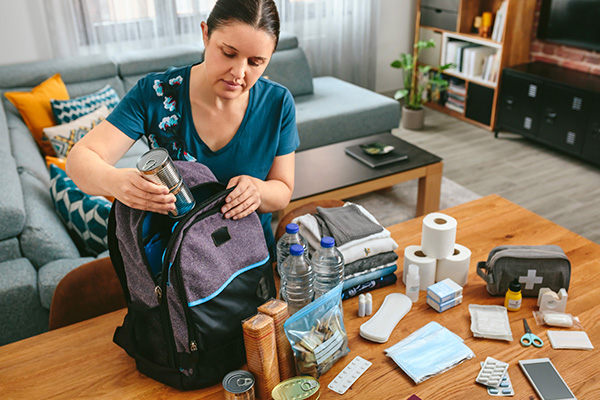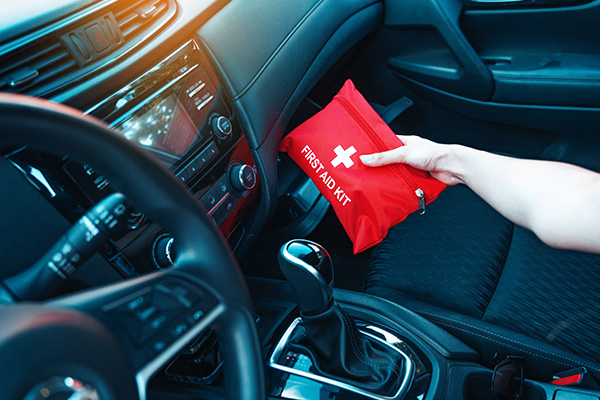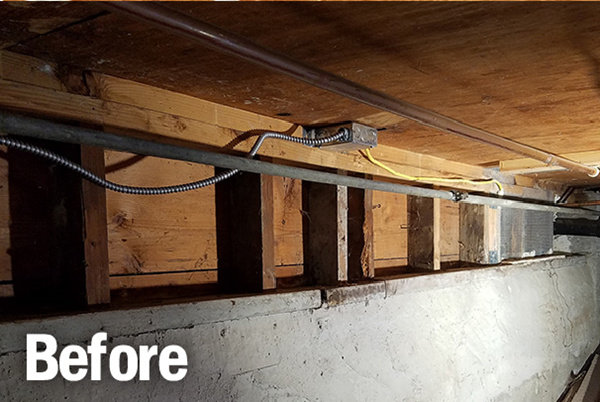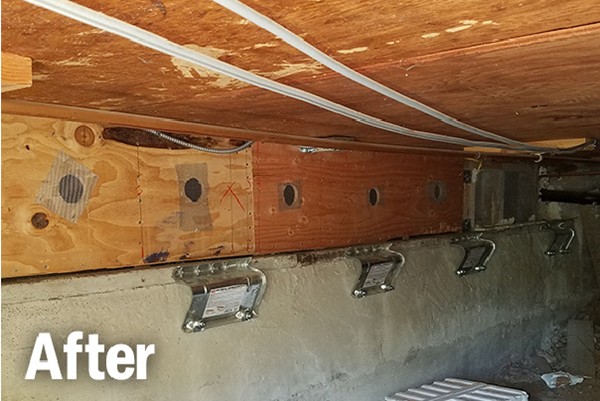When you live in earthquake country, it is a given that a major shaker can strike at any time, and the survival of you and your loved ones is a priority. As a result, you and your family members may have to evacuate your home. There are many earthquake preparedness recommendations you should be aware of if you live in California. But one of the most important is to have an earthquake emergency kit close by and ready for use. A well-stocked earthquake survival kit filled with emergency supplies can help you and your family stay safe, secure, and more comfortable during and after an earthquake.
Making an emergency preparedness kit can be easier than you think. This blog will help you do that by listing the contents you will need for your earthquake survival kit and will provide other steps you can take to help prepare you, your family, and home to survive when the next major seismic event occurs.
What to Put in an Earthquake Preparedness Kit
The saying, “You will get out of something what you put into it,” holds true when it comes to putting together your earthquake preparedness kit. Including the items below on your earthquake preparedness kit list will help you have the essentials to survive and recover in the aftermath of an earthquake. It is important to remember to update your kit regularly, customize it to the needs of your family, and to keep it in a convenient location. These steps will help you be ready for and recover from a damaging earthquake.
The American Red Cross, an authoritative source when it comes to emergency preparation, provides suggestions on how to prepare an earthquake emergency kit. You can use some of these recommendations below to make your own DIY earthquake preparedness kit.
Non-Perishable Food
Include enough non-perishable food and at least one gallon of water per person per day for at least three days. This will ensure that you and your family have enough food and water to sustain you in the immediate aftermath of an earthquake.
First-Aid Kit
A basic first-aid kit should include bandages, pain relievers, scissors, and any other necessary medical supplies. This will allow you to provide initial medical care for minor injuries and illnesses.
Multi-Purpose Tools and Appliances
A multi-tool pliers, and a small tool set will help you make minor repairs and improvise solutions if needed. We also suggest having a fire extinguisher close by in case the earthquake results in a fire at your house.
Hygiene and Sanitation Supplies
Personal hygiene items, such as soap and toothpaste, as well as a portable toilet and waste bags, will allow you to take care of your hygiene needs if running water is not available.
Tools to Turn Off Gas and Water
Suggested tools to have include a gas shut-off wrench and a water shut-off wrench, allowing you to turn off these utilities in case of damage or leaks.
Light and Lighting Equipment
Flashlight, extra batteries, and candles will provide light during power outages.
Cash and Important Documents
After an earthquake, automatic teller machines (ATMs) may not work. Have cash as well as copies of important personal documents, including insurance information, and an emergency contact information list to prepare for power outages or other emergency situations. The Earthquake Country Alliance provides a comprehensive list of important documents to keep handy.
Communication Tools
A battery-powered or hand-crank emergency weather radio, extra batteries, or a solar charger will allow you to stay informed and communicate with others in case traditional phone and internet service is down. And having a whistle will enable you to signal for help if you are buried under earthquake-caused debris.
For Your Pet or Pets
Including pet food, water, and necessary medications for your pets in your DIY earthquake preparedness kit will help ensure that you can take care of your furry friends in case of an emergency.
Shelter and Warmth
A sturdy tent, portable camping stove and fuel, blankets, and warm clothing will provide you with a way to stay warm and dry if you are forced to evacuate your home or if your home is uninhabitable. If you are inside your home or a building, don’t forget to drop, cover, and hold on when the shaking starts, preferably beneath a table or desk if possible, and avoid positioning yourself near windows because of the possibility of broken glass.
For Your Car
Many of the same items contained in your home earthquake survival kit also should be kept in your car. Make sure your car’s emergency preparedness kit includes blankets, extra batteries, cell phone car chargers, non-perishable food, maps, and plenty of water and water purification tablets. Ready.gov provides a complete list of essential items for your vehicle.
How to Prepare a Basic Earthquake Kit
All the items previously mentioned are important, but if you had to narrow it down to basic essentials to pack into your earthquake emergency kit, a list of items recommended by Ready.gov is below:
- One gallon of water per person per day for several days for drinking and sanitation.
- At least a several-day supply of non-perishable food.
- Flashlight, battery-powered or hand crank radio and extra batteries.
- First-aid kit, dust mask and whistle to signal for help.
- Cell phone with chargers, a backup battery, and local maps.
- Wrench or pliers to turn off utilities.
- Plastic sheeting and duct tape to shelter in place if necessary.
- Manual can opener for food.
- Moist towelettes, garbage bags with plastic ties for personal sanitation.
- Prescription and non-prescription medications and prescription eyeglasses.
- A complete list of basics can be found at www.ready.gov/kit.
What Else You Can Do to Prepare for an Earthquake
While personal safety comes first, there are other things to consider as you and your family prepare for the next big earthquake and the damage it may cause. We all know that earthquakes can happen at any time and on any day, which means you may be at home when an earthquake strikes. With that in mind, it is important that your home itself is as structurally sound as possible before the next big earthquake occurs. An important way to help prepare your home for a shaker is to have a better understanding of your home’s ability to withstand the violent shaking caused by a major temblor.
Strengthening Your House
If you live in an older California home, especially if it was built before 1980, we suggest that you schedule a visit with a licensed contractor or structural engineer to learn if your home needs to be strengthened with a seismic retrofit.
While earthquakes in California cannot be prevented, you can proactively help protect against significant damage to your home by taking steps to strengthen it to help withstand the strong shaking caused by earthquakes. Learn more about the ways to strengthen various types of homes to help better protect them when the next big shaker pays a visit.
Be Prepared!
Preparing in advance of an earthquake is an important step in ensuring your safety and well-being. By creating a well-stocked preparedness kit, you can be sure that you and your loved ones will have what you need to help be prepared for the next major seismic event.
Remember to include food, water, shelter, communication tools, hygiene and sanitation supplies, important documents, tools to turn off gas and water, and supplies for your pets. Keep your earthquake survival kit up to date, so that you can always be prepared for the worst. Our 2024 Guide to California Earthquake Preparedness provides comprehensive and detailed information about how to be prepared for the next big, inevitable quake.





